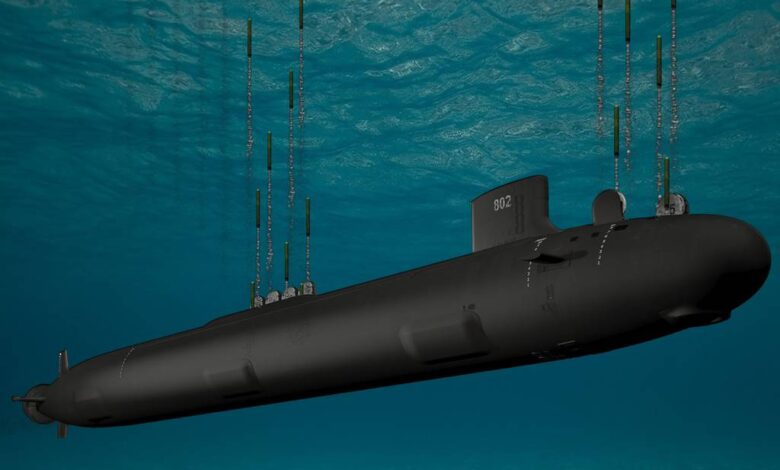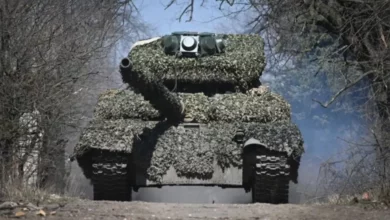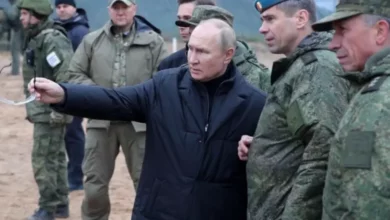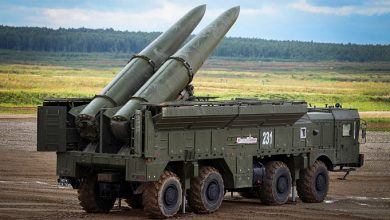US Navy looks for fielding hypersonic missiles on submarines

The U.S. Navy hopes it can more quickly deploy hypersonic weapons on submarines by leveraging testing by the U.S. Army and onboard a Navy destroyer, as well as prioritizing funding for an underwater launch test facility, the admiral overseeing the Navy’s hypersonics work said.
Vice Adm. Johnny Wolfe, the head of the strategic systems programs, said Nov. 18 at the Naval Submarine League’s annual conference the Navy delayed the fielding of a sub-launched hypersonic missile capability from fiscal 2025 to 2028 in part due to funding issues related to the underwater test facility. But because of China’s increasing hypersonics capabilities, Wolfe said the Navy wants to get the missile on a submarine as fast as possible.
The Army and Navy are pursuing the missile together and will use the same all-up round, outfitted with different launchers to operate the missile from the ground, from the Zumwalt-class destroyer and from the Virginia-class attack submarine’s Virginia Payload Module segment. That segment will be built into Block V boats, the first of which should deliver to the Navy in 2026.
“We’re going to deploy it to the Army in FY23, they will deploy their first battery. We’re on a path to get to the first Zumwalt in ‘25. And then we’re on a path to get to the first Virginia in ‘28 once that submarine comes out with the Virginia Payload Module, and we’re looking at … can we accelerate that even sooner?” he said, adding that the submarine’s stealth will create a complex dilemma for China.
Wolfe said the original plan to put the Conventional Prompt Strike missile, the Navy’s name for its hypersonic capability, on the Ohio-class guided-missile submarine (SSGN) by 2025 fell apart because the Navy couldn’t get the funding it needed for the underwater launch test facility. He called the facility an “absolutely critical” investment, without which the Navy is not comfortable putting this new missile on a crewed submarine for testing down the road.
The plan called for some capability on the SSGNs by 2025 and then full capability on the Virginia-class attack subs by 2028. With the delay, the Navy decided not to pursue integrating the missile with the SSGNs at all, given the short overlap between the missile’s fielding and the SSGN’s planned retirement dates. Instead, the Navy will focus its undersea efforts solely on the Virginia Payload Module, though later in the decade than it wants.
The Zumwalt destroyers, essentially a three-ship class without a mission, were tapped to be the Navy’s near-term fielding option instead of the SSGNs when the undersea test facility funding was cut. Wolfe said “we’re trying to leverage Zumwalt, even though it’s different” and more similar to the Army’s ground launchers.
Still, despite launching from the surface instead of underwater, “a lot of the things that we’re going to test on Zumwalt are still going to be applicable to Virginia. We’re looking at how we get that learning to get to” an earlier fielding date for the Conventional Prompt Strike missile on the Virginia Payload Module.
Wolfe also noted in his remarks the rush to get a hypersonic missile fielded by 2023 for the Army and 2025 and 2028 for Navy destroyers and submarines respectively isn’t the end of the road for the program, but rather an opening bid to get the U.S. military into the hypersonics game.
He said the program has built in a robust technology test and maturation effort, which recently involved the military and other agencies launching three sounding rockets from Wallops Island in Virginia with a combined 21 new technologies onboard to test them in flight.
The program has also built in technology insertion points every two years, so there’s an inherent way to get upgrades and new capabilities into the missile production line as they progress through testing and prove themselves ready for fielding.
“That’s how we’re going to stay ahead of what everybody else is doing, that’s how we’re going to continue to put capability in our warfighters’ hands,” Wolfe said.
Source: DefenseNews




